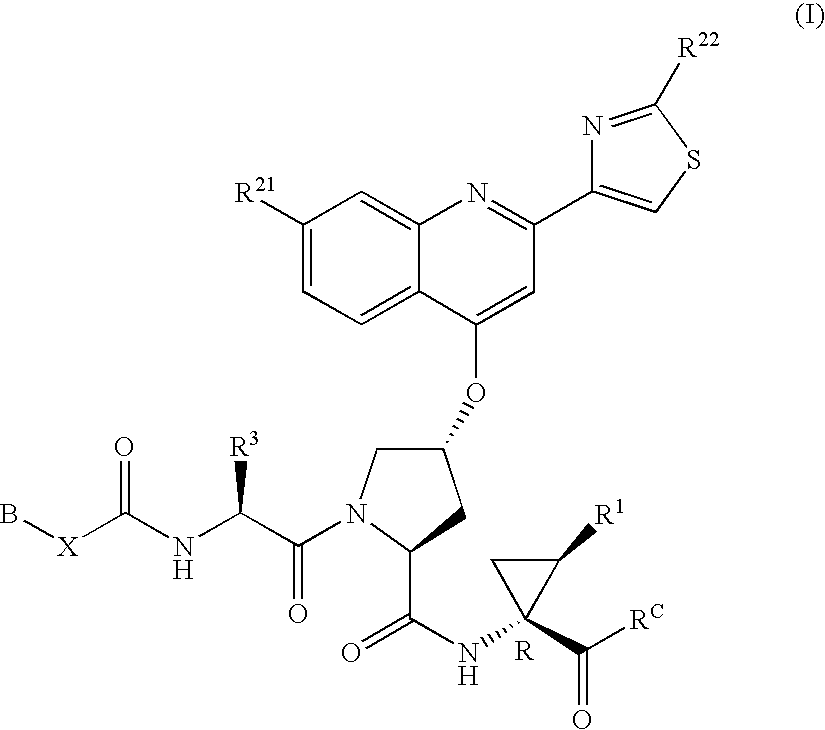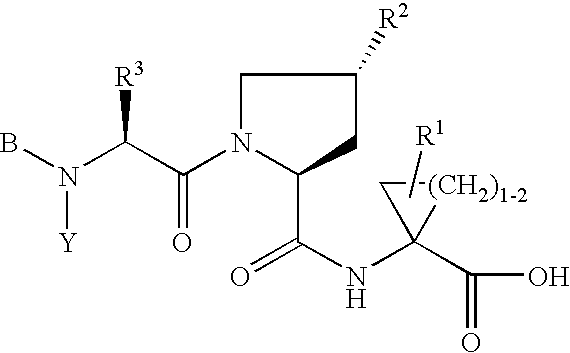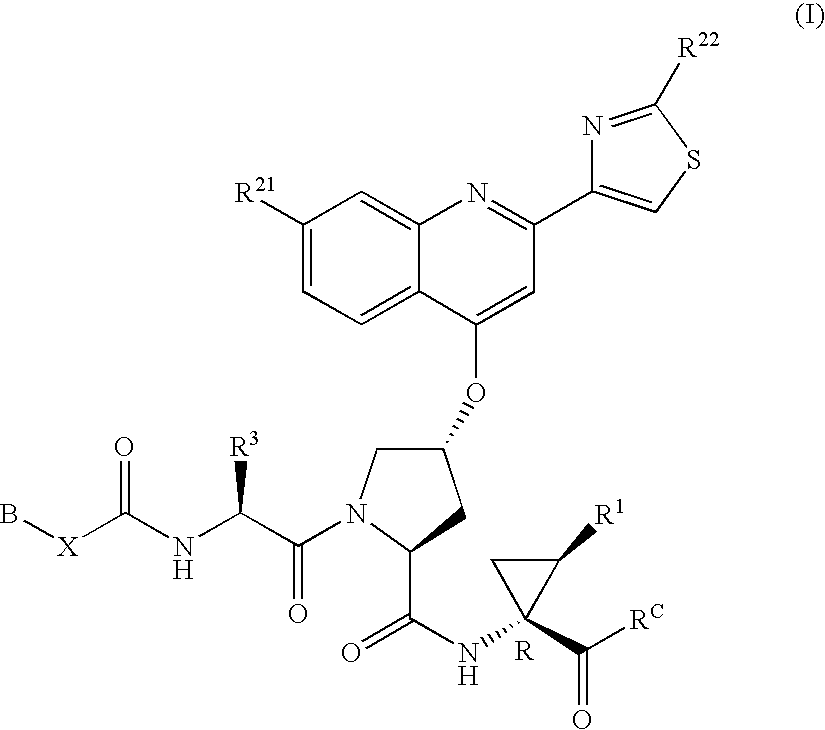Hepatitis C inhibitor compound
a technology of hepatitis c and inhibitor compound, which is applied in the field of peptide analogs, can solve the problems of lack of effective treatment, recommendation of immunoglobulins, and inability to establish the role of cellular and humoral immune responses in protecting against hcv infection and disease, and achieve the effect of treating or preventing a hepatitis c viral infection
- Summary
- Abstract
- Description
- Claims
- Application Information
AI Technical Summary
Benefits of technology
Problems solved by technology
Method used
Image
Examples
example 1
[0207]Synthesis of 2-carbomethoxy-7-dimethylamino-4-hydroxyquinoline (6b):
[0208]Commercially available N,N-dimethyl-1,3-phenylene diamine dihydrochloride salt (12 g) was neutralized with solid NaHCO3 (partitioned between H2O and EtOAc). After neutralization, the phases were separated and the organic phase dried and concentrated to give a brownish oil (7.8 g, 57.3 mmol) which was used as is in the next step. Dimethyl acetylene dicarboxylate 15 (7.044 mL, 57.3 mmol) was dissolved in MeOH and treated with the neutralized aniline 16 (portionwise) in MeOH at 0° C. Considerable heat was generated (exothermic reaction). The mixture (brown) was heated at 65° C. for 2 hours. The brown solution was concentrated to dryness, extracted into EtOAc and washed with sat. NaHCO3 (aq), followed by brine, dried (MgSO4), filtered, and concentrated. The crude mixture was purified by flash chromatography using a 10% EtOAc / hexane solvent to afford 12 g of compound 17.
[0209]MS: electrospray: (M+H)+; 279 an...
example 2
[0212]Preparation of 3-thioallophanic acid isopropyl ester (9a)
[0213]Potassium thiocyanate (4.8 g, 0.049 mol) was dissolved in water (10 mL) and acetonitrile (30 mL) before being treated with pyridine (0.25 mL, 3.09 mmol, 6.3 mol %). The solution was cooled to 0° C. (ice bath) and then treated dropwise with isopropylchloroformate in toluene (51 mL, 0.051 mol, 1.05 eq.) over 2 hours. The mixture was stirred rapidly to ensure mixing of the layers to give an orange solution. The mixture was allowed to stir overnight and then cooled to 0° C. before being treated with 10% HCl (aq) (2 mL) to dissolve the salts. This mixture was then treated with ammonia in dioxane (0.5M solution, 110 mL, 1.12 eq.) from a dropping funnel over 2 h. The mixture was allowed to warm to RT and stirred overnight. The mixture was quenched with water (100 mL) and the phases separated. The aqueous phase was re-extracted with EtOAc and the combined organic phase dried over MgSO4, filtered and concentrated to give a...
example 3
[0215]Preparation of 3-thioallophanic acid cyclopentyl ester (9b)
[0216]Using the procedure described above but using cyclopentylchloroformate instead of isopropylchloroformate gave the desired compound (9b).
P3 Building Blocks
[0217]P3 moieties of compounds of Formula (I) were generally prepared using the protocols outlined in WO00 / 59929, published Oct. 12, 2000, and WO00 / 09543, published on Feb. 24, 2000.
PUM
| Property | Measurement | Unit |
|---|---|---|
| Composition | aaaaa | aaaaa |
| Antimicrobial properties | aaaaa | aaaaa |
Abstract
Description
Claims
Application Information
 Login to View More
Login to View More - R&D
- Intellectual Property
- Life Sciences
- Materials
- Tech Scout
- Unparalleled Data Quality
- Higher Quality Content
- 60% Fewer Hallucinations
Browse by: Latest US Patents, China's latest patents, Technical Efficacy Thesaurus, Application Domain, Technology Topic, Popular Technical Reports.
© 2025 PatSnap. All rights reserved.Legal|Privacy policy|Modern Slavery Act Transparency Statement|Sitemap|About US| Contact US: help@patsnap.com



